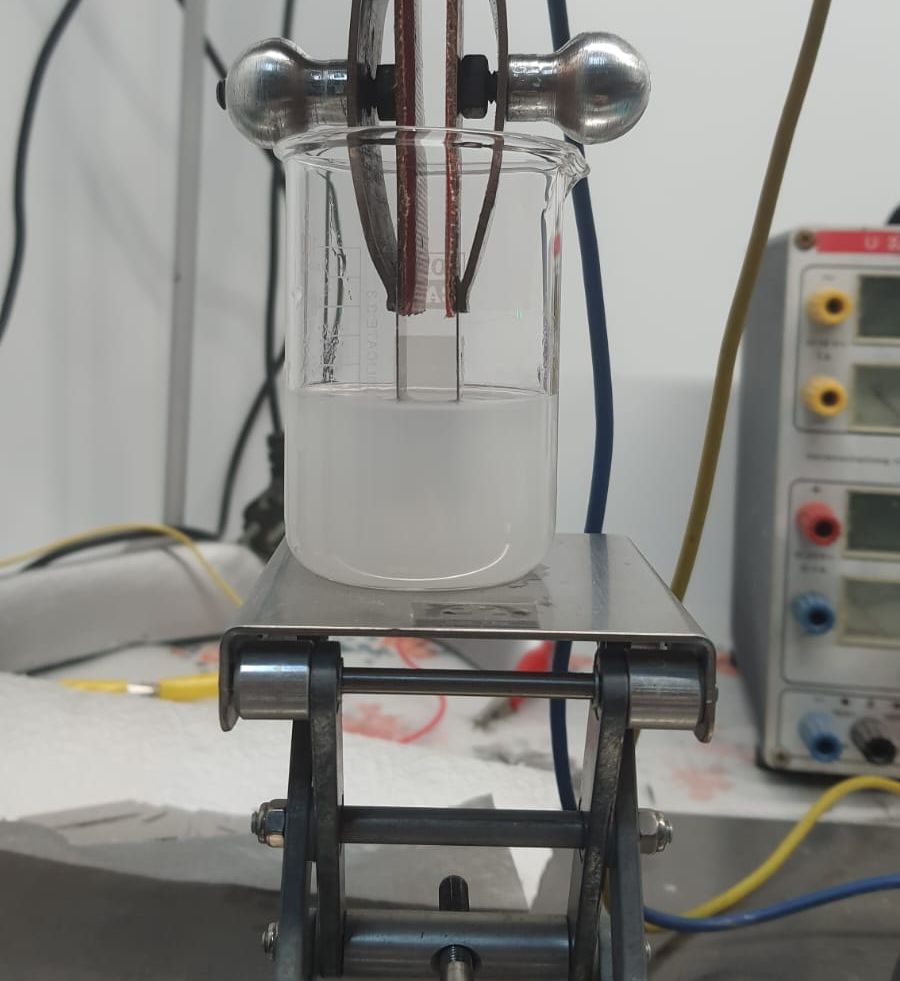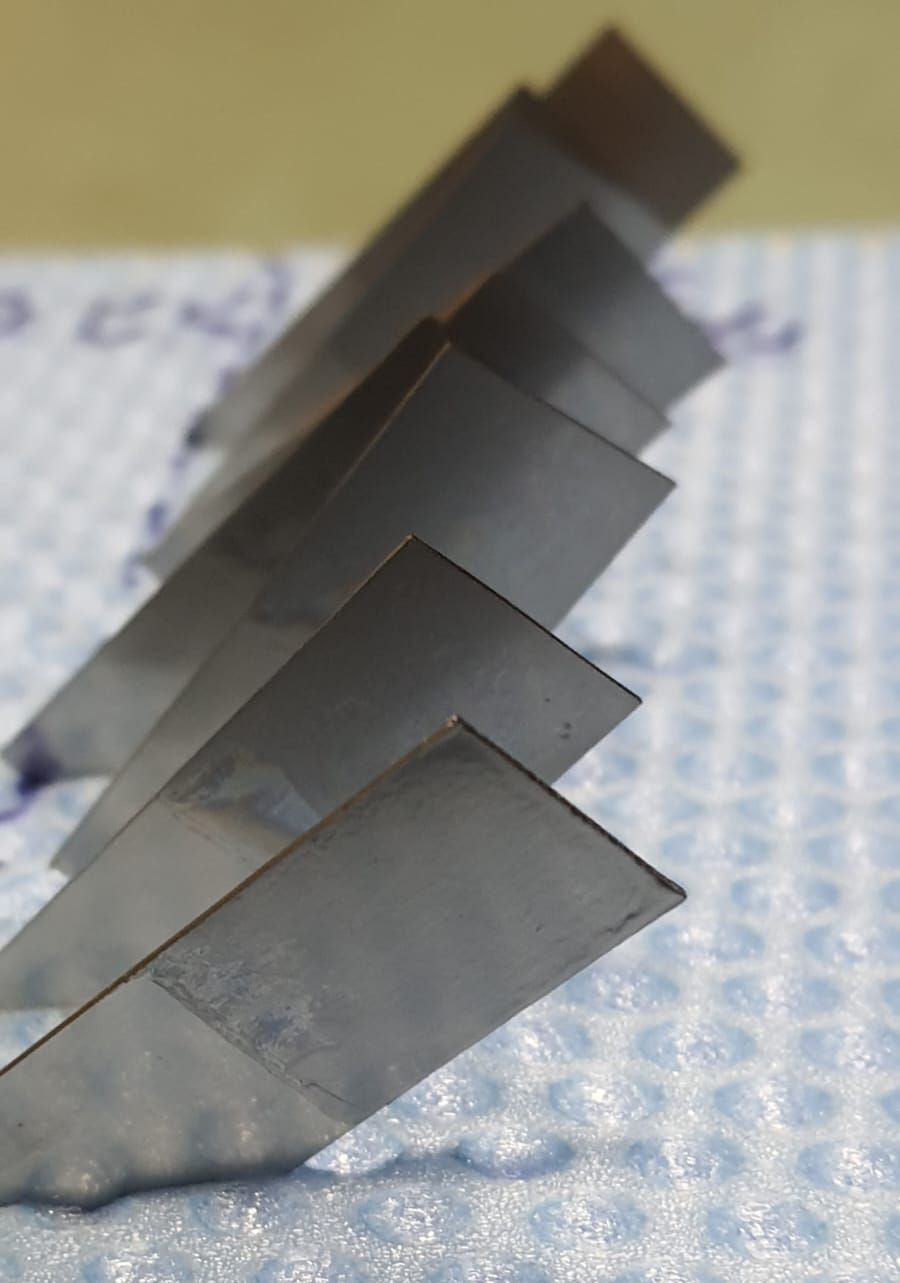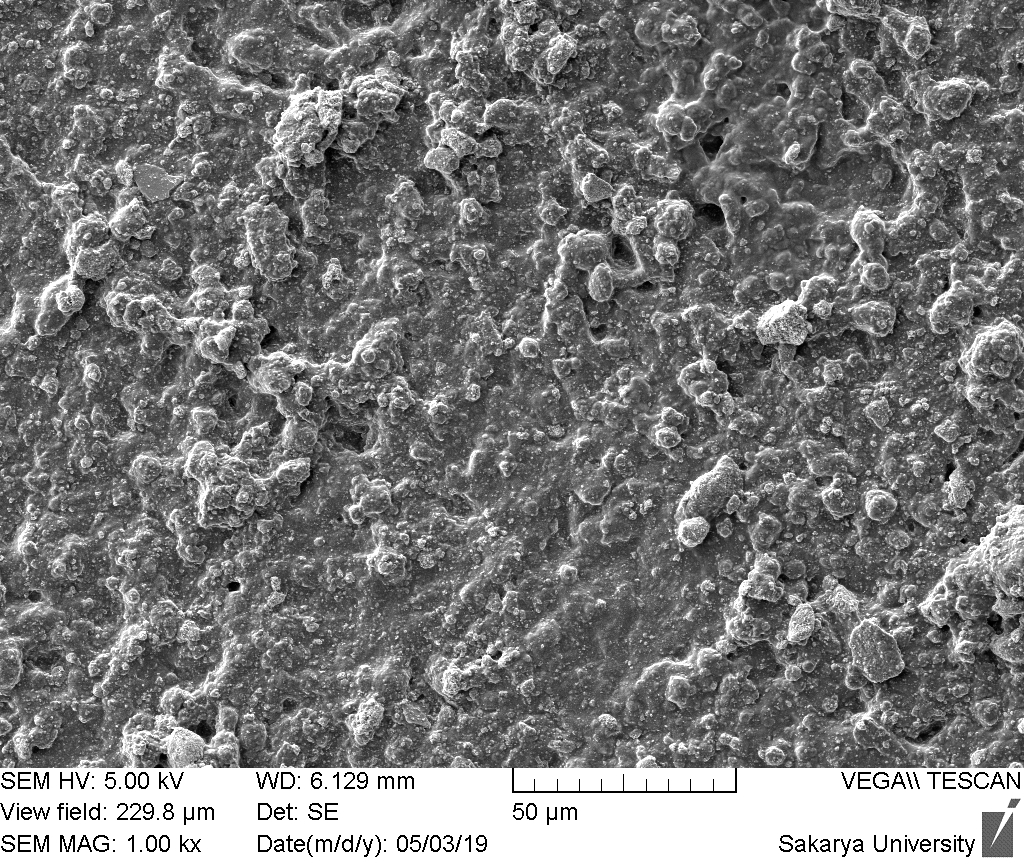We prepare alternative EPD coatings
| We deposit biostable or bioresorbable coatings by electrophoretic deposition (EPD) as an alternative to the single phase coatings. Defined shortly as, the deposition of suspended particles under an electrical field on the oppositely charged electrode, EPD is a coating method that is cost-effective, scalable, and can be applied at room temperature. |
Biostable Coatings
 | |
|
The processing images of hydroxyapatite-reinforced PEEK coatings by EPD, in which two-phase hybrid layers can be prepared. Due to the relatively lower melting point of the matrix formed by a polymer material, the sintering temperature is relatively quite low compared to the ceramics alone. Hence, the densification can be done without either altering the mechanical properties of the substrate or ionic exchange between the coating and substrate.
| |
 |  |
|
SEM images of the polyetheretherketone (PEEK)-hydroxyapatite hybrid biostable coatings deposited in this context. After the thermal treatment, sintered PEEK forms the matrix, whereas HA particles are used as the reinforcement material. Consequently, the bioactivity and mechanical properties of bioinert PEEK can be developed. | |
Bioresorbable Coatings
 |  |
|
EPD process image of soft coatings (left), prepared coatings on stainless steel (right). EPD makes it possible to deposit soft polymer films without any extra sintering step. In this case, the molecules within the solution form the continuous coating layer. BIO-TESLAB team produced hydroxyapatite incorporated chitosan, chitosan-carrageenan, and PVA-gelatin composite bioresorbable coatings in this area.
|
 |
|
EPD-coated hydroxyapatite reinforced PVA-gelatin layer's upper surface SEM image |